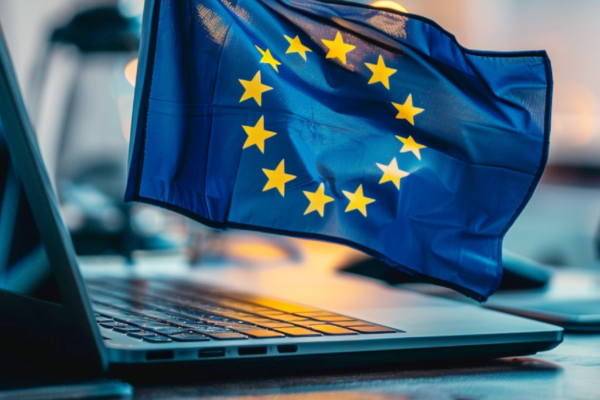Securing cost effective green energy

Tim Foster at Conrad Energy argues that businesses can talk the green talk while walking the green walk
Sustainability has become a vital concern for businesses in almost every industry. That importance is reflected by the number of businesses publicising their ESG policies and providing regular updates on their efforts to operate more sustainably.
There are two particularly compelling reasons to ‘go green’: firstly, the genuine need to make a difference in the fight against climate change, and secondly, that it makes good business sense to be sustainable.
Pressure is growing on businesses of all sizes to make improvements when it comes to sustainability, including from the government, legislation and from both ends of the supply chain, with research demonstrating that consumers are increasingly willing to spend extra on products and services with strong sustainability credentials. The challenge for businesses then, is both to make progress and to be able to illustrate it.
There is a growing array of options for businesses looking to make positive strides on sustainability. That is particularly true when it comes to energy consumption, which for many companies is also where they can make the most progress on decarbonising their operations.
Such efforts are commendable, but from a business perspective, it is arguably not enough just to make progress. Rather, that progress needs to be measurable, demonstrable and benchmarked.
Demonstrating sustainability
Thanks to technological advancements, government support, and the efforts of the energy industry, the UK has made considerable progress on increasing the available supply of renewable energy. Indeed, renewable electricity generation reached a near record share of 50.9 per cent of total generation in the first quarter of 2024.
However, renewable energy flows through the grid alongside energy generated from other sources, including fossil fuels, ultimately becoming indistinguishable.
As a result, historically it was impossible to establish exactly how ‘green’ energy being used was in anything but the broadest sense. To resolve this, the EU introduced a directive in 2001 that production from renewable sources should be certified, which the UK government implemented via the introduction of Renewable Energy Guarantees of Origin (REGO) certificates.
Under OFGEM’s oversight, REGO certificates are provided to energy generators for every MWh of renewable energy generated. The certificates have enabled suppliers to prove that they are producing and supplying green energy by providing REGO certificates equivalent to the amount of energy used by their customers. In essence, this introduced much-needed transparency about the provision of renewable electricity.
That said, whilst REGO certificates were a commendable step forward, problems with demonstrating renewable credentials remain. The crux of the problem is that REGO certificates only show that a given amount of green energy has been generated.
Accordingly, whilst businesses can use the certificates to show that an amount of renewable energy has been generated and purchased equal to the amount of energy used by said business, typically on an aggregated annual basis, this does not actually demonstrate that the business has used green energy.
By way of example, suppliers could purchase REGO certificates from a solar farm in summer and allocate these against a business that uses more energy during the winter. In these circumstances, the business may well actually be drawing heavily from the grid at a time when fossil fuel generation is high.
Consequently, whilst REGO certificates would show that their energy usage was matched against renewable energy production, the actual picture of their energy usage would be murkier.
Achieving greater clarity
The REGO certification system was an important step forward, but that is not a justification to rest on laurels when there are practical steps that could be taken to give businesses better assurance that they are buying renewable energy.
For example, it is possible for energy providers to match energy generation with demand by measuring the amount of energy a renewable asset is producing against the amount of energy a business is consuming on a half hourly basis. Best-in-class monitoring systems can even include the name and location of a specific renewable asset.
The advantage of this is that it allows businesses to directly link their energy usage to the renewable energy being produced by suppliers. This means that, rather than only being able to show that an amount of energy equivalent to that used was purchased from a solar farm over the course of year, businesses can demonstrate that a nearby wind farm generated the same amount of energy used over the last 30 minutes. That level of accuracy and transparency is the gold (or green) standard.
Behind the meter solutions
Businesses can further cement their green credentials through ‘behind the meter’ energy. By investing in behind the meter energy, businesses gain access to on-site or near-site renewable energy assets, whether that is solar panels or wind turbines, drawing energy from these renewable energy sources to power their operation.
Not only is this more cost-effective – with energy companies increasingly offering models where the upfront and operational costs of installing renewable energy sources are met – it also fixes prices and reduces reliance on the grid. This is important at a time when grid connections are restricted by limited capacity.
Businesses that generate their own energy supply are also better equipped to monitor their own energy usage data. This enables them to identify patterns of energy usage and increase ‘demand flexibility’. An example is businesses increasing the number of processes conducted during the day when solar panels are generating most energy, despite ‘cheaper’ and ‘traditional’ costs being lower at night.
REGOs still offer valuable peace of mind, but they compare increasingly unfavourably with the more precise alternatives – including more accurate monitoring and behind-the-meter solutions – that are now available.
That is not to say that businesses should stop using REGOs entirely, but rather that businesses should no longer rely on annual REGO submissions exclusively. The reality is that making the additional effort to more precisely evidence green credentials is fast becoming an expectation.
Ultimately, the right tools to respond are on hand, and businesses would be well-advised to make use of them.
Tim Foster is Head of Energy Services at Conrad Energy
Main image courtesy of iStockPhoto.com and loveguli

Business Reporter Team
Most Viewed
23-29 Hendon Lane, London, N3 1RT
23-29 Hendon Lane, London, N3 1RT
020 8349 4363
© 2024, Lyonsdown Limited. Business Reporter® is a registered trademark of Lyonsdown Ltd. VAT registration number: 830519543





